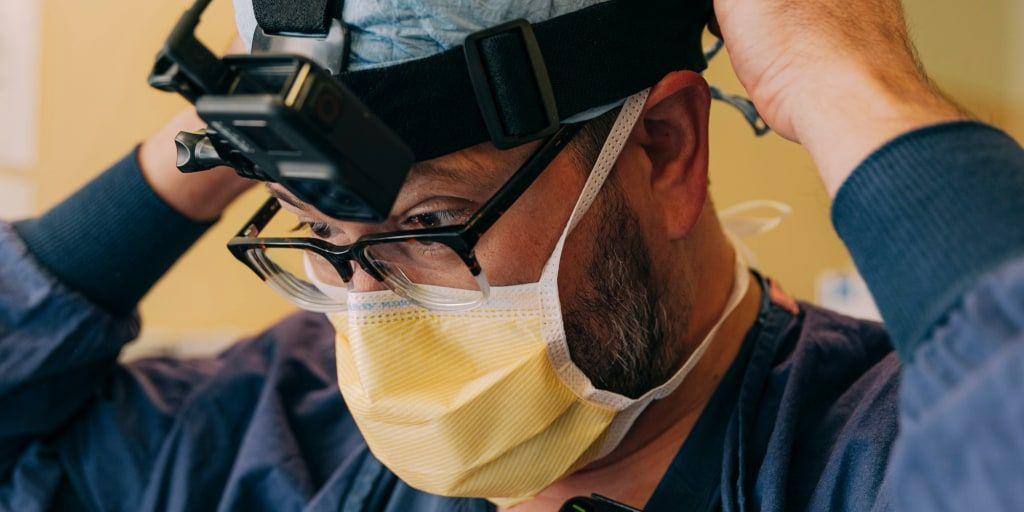Study Reveals Alarming Frequency of Medication Errors in Hospitals
2 Sources
2 Sources
[1]
Need medicine in hospital? Study finds how often IT flaws lead to wrong drug or dose
But as a growing body of research shows, these electronic systems are not perfect. Our new study shows how often these technology-related errors occur and what they mean for patient safety. Often they occur due to programming errors or poor design and are less to do with the health workers using the system. What did we look at? What did we find? Our team reviewed more than 35,000 medication orders at a major metropolitan hospital to understand how frequently technology-related errors occur. We focused on errors made when medications are prescribed or ordered via a computer-based system. In many hospitals, these systems have replaced the clipboard that used to hang at the end of a patient's bed. Our research showed that as many as one in three medication errors are technology-related. That is, the design or functionality of the electronic medication system facilitated the error. We also examined how technology-related errors changed over time by reviewing rates of errors at three time points: in the first 12 weeks of using the system, and at one and four years after it was implemented. We may expect technology-related errors to become less frequent over time as health professionals become more familiar with systems. However, our research showed that although there is an early "learning curve", technology-related errors continued to be an issue for many years after electronic systems are implemented. In our study, the rate of technology-related errors was the same four years after the system went in as it was in the first year of use. How could errors happen? Errors can happen for a number of reasons. For instance, prescribers can be confronted with a long list of possible dose options for a medication and accidentally choose the wrong one. This can lead to a dose less than, or more than, the one intended. In our study, we found high-risk medications were frequently associated with technology-related errors. These included oxycodone, fentanyl and insulin, all of which can have serious adverse effects if prescribed incorrectly. Technology-related errors can also happen at any point in a patient's care when a computer is used. One case in the United States involved a nurse accessing and administering the wrong medicine. She obtained the medicine from a computer-controlled dispensing cabinet (known as an automated dispensing cabinet), which is used to store, dispense and track medicines. Through poor design, the cabinet allowed the nurse to search for a medicine by entering just two letters. Good design would not have displayed any medication options with only two letters. The nurse selected and administered the wrong drug to the patient, causing cardiac arrest and the nurse faced a criminal trial. Automated dispensing cabinets are being increasingly rolled out in Australian hospitals. Earlier this year we heard of an error in South Australia's electronic medical record system. This miscalculated the due date for more than 1,700 pregnant women, possibly prompting premature inductions of labour. We produce a series of safety bulletins for the health system that describe and address specific examples of poor system design we have identified during our research or others working in the system have brought to our attention. These include a drop-down menu that allows prescribing of a medicine via injection into the spine. This particular medicine would be fatal if administered this way. Another shows an in-built calculator that rounds up or down the doses for medication according to set rules. But this may lead to incorrect doses in very young or lower-weight children. For each example, we include recommendations to optimise the systems. Organisations can then use these specific examples to test their systems and take action. What else would improve safety? With increasing digitisation in our hospitals and health services, the risk of technology-related errors increases. And that's even before we talk about the potential for error in artificial intelligence used in our health systems. We're not calling for a return to paper-based records. But until we commit to the task of making computer-based systems safe, we will never fully benefit from the enormous potential digital systems could deliver in health care. Systems need to be continually monitored and updated, to make them easier and safer to use and to prevent issues from becoming catastrophic. Health IT managers and developers need to understand errors and recognise when system design is suboptimal. Since clinicians are often the first to notice issues, there should also be mechanisms to investigate and address their concerns promptly, supported by systematic data on technology-related errors. (The Conversation) PY PY
[2]
Need medicine in hospital? Our study finds how often IT flaws lead to the wrong drug or dose
Macquarie University provides funding as a member of The Conversation AU. Every time you are prescribed medicine in hospital a computer will prompt your doctor about the appropriateness of the medicine and its dose. Every time health professionals update patient records on the computer they need to fill in the appropriate information in the correct spot, or choose an option from a drop-down menu. But as a growing body of research shows, these electronic systems are not perfect. Our new study shows how often these technology-related errors occur and what they mean for patient safety. Often they occur due to programming errors or poor design and are less to do with the health workers using the system. What did we look at? What did we find? Our team reviewed more than 35,000 medication orders at a major metropolitan hospital to understand how frequently technology-related errors occur. We focused on errors made when medications are prescribed or ordered via a computer-based system. In many hospitals, these systems have replaced the clipboard that used to hang at the end of a patient's bed. Our research showed that as many as one in three medication errors are technology-related. That is, the design or functionality of the electronic medication system facilitated the error. We also examined how technology-related errors changed over time by reviewing rates of errors at three time points: in the first 12 weeks of using the system, and at one and four years after it was implemented. We may expect technology-related errors to become less frequent over time as health professionals become more familiar with systems. However, our research showed that although there is an early "learning curve", technology-related errors continued to be an issue for many years after electronic systems are implemented. In our study, the rate of technology-related errors was the same four years after the system went in as it was in the first year of use. How could errors happen? Errors can happen for a number of reasons. For instance, prescribers can be confronted with a long list of possible dose options for a medication and accidentally choose the wrong one. This can lead to a dose less than, or more than, the one intended. In our study, we found high-risk medications were frequently associated with technology-related errors. These included oxycodone, fentanyl and insulin, all of which can have serious adverse effects if prescribed incorrectly. Technology-related errors can also happen at any point in a patient's care when a computer is used. One case in the United States involved a nurse accessing and administering the wrong medicine. She obtained the medicine from a computer-controlled dispensing cabinet (known as an automated dispensing cabinet), which is used to store, dispense and track medicines. Through poor design, the cabinet allowed the nurse to search for a medicine by entering just two letters. Good design would not have displayed any medication options with only two letters. The nurse selected and administered the wrong drug to the patient, causing cardiac arrest and the nurse faced a criminal trial. Automated dispensing cabinets are being increasingly rolled out in Australian hospitals. Earlier this year we heard of an error in South Australia's electronic medical record system. This miscalculated the due date for more than 1,700 pregnant women, possibly prompting premature inductions of labour. We produce a series of safety bulletins for the health system that describe and address specific examples of poor system design we have identified during our research or others working in the system have brought to our attention. These include a drop-down menu that allows prescribing of a medicine via injection into the spine. This particular medicine would be fatal if administered this way. Another shows an in-built calculator that rounds up or down the doses for medication according to set rules. But this may lead to incorrect doses in very young or lower-weight children. For each example, we include recommendations to optimise the systems. Organisations can then use these specific examples to test their systems and take action. What else would improve safety? With increasing digitisation in our hospitals and health services, the risk of technology-related errors increases. And that's even before we talk about the potential for error in artificial intelligence used in our health systems. We're not calling for a return to paper-based records. But until we commit to the task of making computer-based systems safe, we will never fully benefit from the enormous potential digital systems could deliver in health care. Systems need to be continually monitored and updated, to make them easier and safer to use and to prevent issues from becoming catastrophic. Health IT managers and developers need to understand errors and recognise when system design is suboptimal. Since clinicians are often the first to notice issues, there should also be mechanisms to investigate and address their concerns promptly, supported by systematic data on technology-related errors.
Share
Share
Copy Link
A recent study highlights the concerning prevalence of medication errors in hospitals, shedding light on the flaws in the medication process that can lead to patients receiving incorrect drugs or doses.

Medication Errors: A Prevalent Issue in Hospitals
A recent study has uncovered a troubling trend in hospital medication practices, revealing that errors in the medication process are alarmingly common. The research, conducted across multiple hospitals, found that flaws in the system frequently result in patients receiving the wrong drug or incorrect dosage, potentially compromising patient safety and treatment efficacy
1
.Study Findings and Implications
The study, which analyzed thousands of medication administrations, discovered that errors occurred in approximately one out of every five doses given to patients. This statistic highlights the urgent need for improved medication management systems in healthcare settings
2
.Researchers identified several key areas where errors were most likely to occur:
- Medication timing: Doses were often administered at incorrect times.
- Dosage mistakes: Patients sometimes received incorrect amounts of medication.
- Omissions: In some cases, prescribed medications were not administered at all.
- Wrong drug: Occasionally, patients were given entirely different medications than prescribed.
Factors Contributing to Medication Errors
The study pointed to various factors contributing to these errors:
- High workload and time pressure on hospital staff
- Complex medication regimens for patients with multiple conditions
- Inadequate communication between healthcare providers
- Lack of standardized protocols for medication administration
Potential Solutions and Recommendations
To address these issues, the researchers suggested several potential solutions:
- Implementation of electronic medication management systems
- Improved staff training and education on medication safety
- Regular audits and feedback on medication administration practices
- Increased involvement of clinical pharmacists in the medication process
Related Stories
Impact on Patient Safety and Healthcare Quality
The frequency of medication errors revealed by this study raises significant concerns about patient safety and the overall quality of healthcare delivery. Medication errors can lead to adverse drug reactions, prolonged hospital stays, and in severe cases, patient harm or death
1
.Call for Action
The researchers emphasize the need for immediate action to address these systemic flaws in hospital medication processes. They call for healthcare institutions, policymakers, and medical professionals to collaborate on developing and implementing more robust medication safety measures
2
.As this study brings to light the prevalence of medication errors in hospitals, it serves as a crucial wake-up call for the healthcare industry. Addressing these issues is paramount to ensuring patient safety and improving the overall quality of care in hospital settings.
References
Summarized by
Navi
Related Stories
Recent Highlights
1
Google launches Gemini 3 Flash as default AI model, delivering speed with Pro-grade reasoning
Technology

2
OpenAI launches GPT Image 1.5 as AI image generator war with Google intensifies
Technology

3
OpenAI launches ChatGPT app store, opening doors for third-party developers to build AI-powered apps
Technology








